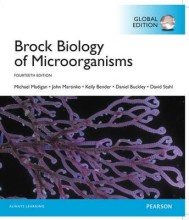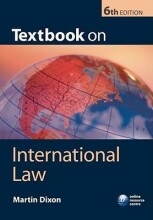Summary: Brock Biology Of Microorganisms Global Edition | 9781292018317
- This + 400k other summaries
- A unique study and practice tool
- Never study anything twice again
- Get the grades you hope for
- 100% sure, 100% understanding
Read the summary and the most important questions on Brock Biology of Microorganisms Global edition | 9781292018317
-
1 Introduction and Major Themes of Microbiology
This is a preview. There are 41 more flashcards available for chapter 1
Show more cards here -
What are Koch's four postulates (with limitations)?
- Suspected pathogen must be present in diseased animal and not in healthy. (several human diseases do not cause disease in other animals)
- suspected pathogen must be grown in a pure culture. (some bacteria do not grow in a pure culture on a plate) (virusses can not grow on plates)
- cells from suspected pathogens cause disease in healthy animals.
- suspected pathogens must be reisolated and shown to be the same as the original pathogen. -
Wat voor toxine is het cholera toxine? A) Endotoxine en AB-toxine B) Enterotoxine en AB-toxineC) Endotoxine en cytotoxine D) Enterotoxine en cytotoxine
B) Enterotoxine en AB-toxine -
2 Microbial cell structure and functiom
This is a preview. There are 5 more flashcards available for chapter 2
Show more cards here -
What is the function of a peptidoglycan?
its a polymer that gives strength to the cell walls. It consists of a glycan and a peptide part. -
What is different about archaeal cell walls?
Pseudomurein instead of peptidoglycan. No outer membrane. S-layer -
3 types of cell locomotion?
- flagellum
- gliding motility (glide protein)
- taxis (in response to chem/physical gradient) -
What are the differences between fimbriae and pili?
Pili are longer than fimbriae. Pili dont only assist in the attachment of organisms to the surface of a cell but also conjugation (NA transfer). -
What are 3 characteristics of endospores? And the 3 stages.
- resistent to heat, harsh chemicals and radiation
- ideal for dispersal via wind/water etc.
- present in some gram-positive bacteria.
- terminal, subterminal and central -
How is the speed and motion of a flagella determined? (inbacteria)
The speed by the proton motive force (mot protein next to MS and C rings)
The motion is either peritrichous (slow and one direction) or polar (fast and can spin around) -
3 Microbial Metabolism
This is a preview. There are 1 more flashcards available for chapter 3
Show more cards here -
What is a macronutrient and what is a micronutrient? (and example)
A macronutrient is required in large amounts, e.g. potassium
A micronutrient is required in trace amounts, e.g. metal ions (Fe) -
3 major prokaryotic transport mechanisms?
- simple transport: proton motive force
- group translocation: chem. modification of transported substance driven by phosphoenolpyruvate (PEP)
- ABC transporter: Energy from ATP. Periplasmic binding proteins.
- Higher grades + faster learning
- Never study anything twice
- 100% sure, 100% understanding
Topics related to Summary: Brock Biology Of Microorganisms Global Edition
-
Microbial growth and control
-
Metabolic regulation - major modes of regulation
-
Metabolic regulation - DNA-binding proteins
-
Metabolic regulation - negative control: repression and induction
-
Metabolic regulation - positive control: activation
-
Metabolic regulation - two-component regulatory systems
-
Metabolic regulation - regulation of chemotaxis
-
Metabolic regulation - other global control networks
-
Virusis and virology
-
Genetics of bacteria and archea - Mutation
-
Genetics of bacteria and archea - Gene transfer in Bacteria - genetic recombination
-
Metabolic diversity of microorganisms - phototrophy
-
Microbial interactions with humans - normal human-microbial interactions
-
Microbial interactions with humans - pathogenesis - Pathogenicity and virulence
-
Person-to-person microbial diseases

































